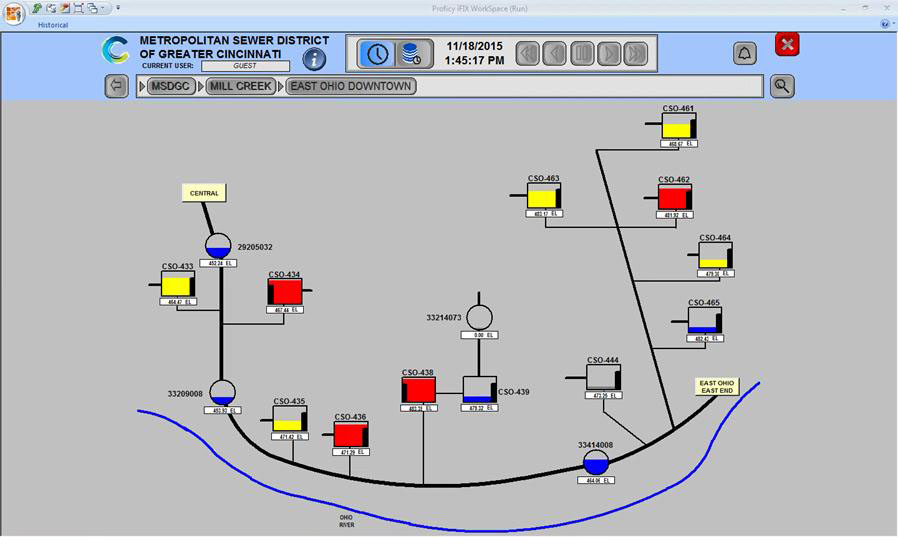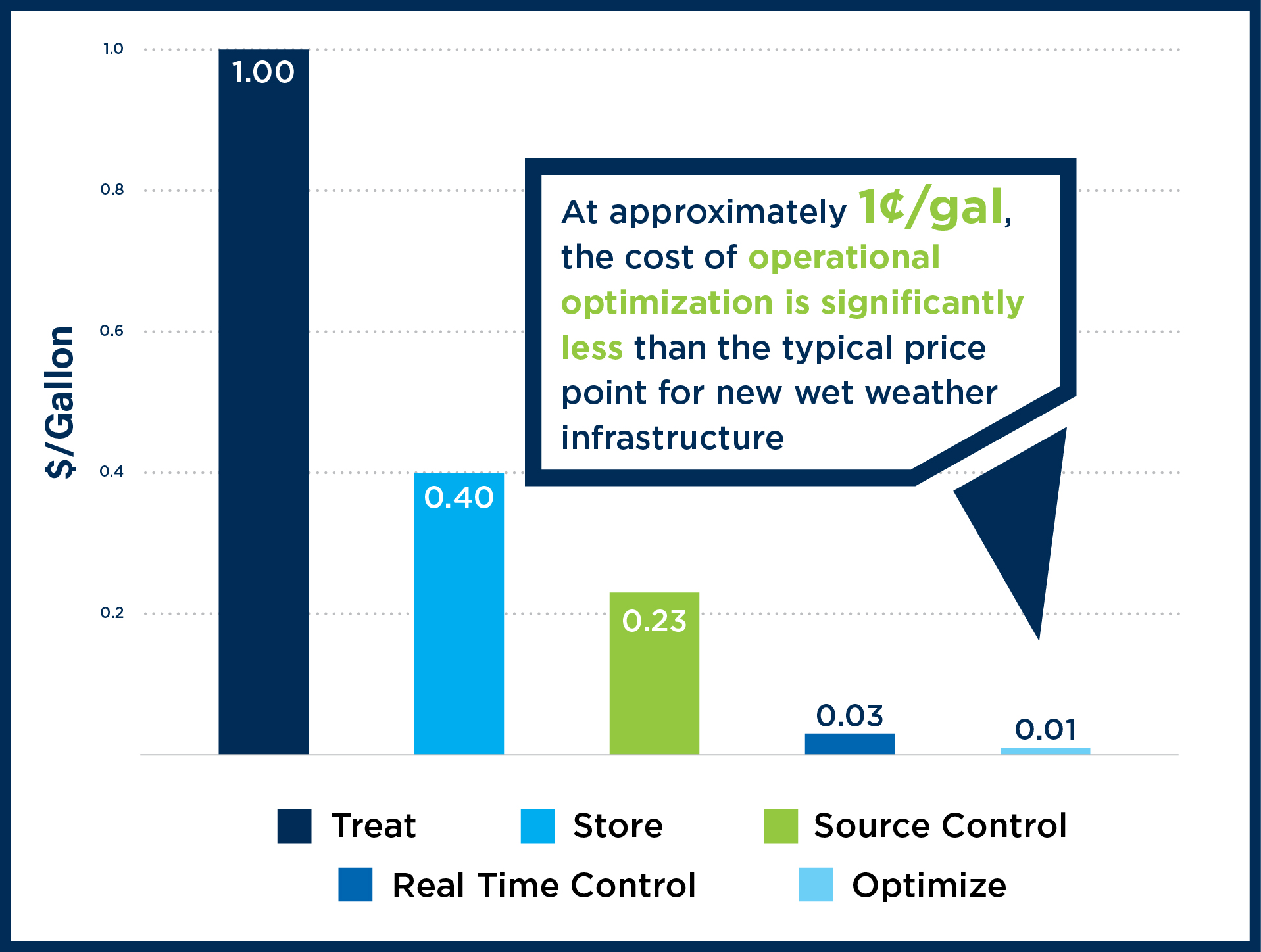Smart Sewers
MSD operates and maintains over 3,000 miles of sewers (combined sanitary/stormwater and sanitary only), 100+ pump stations, nine wastewater treatment plants, and wet weather facilities within the sewer system including three high-rate treatment facilities.
More than 700 remote sensors within the sewers and at weather weather facilities, pump stations, and treatment plants are used to collect data on water levels, flow, water quality, etc. Information from other data sources, such as rain gages and stream gages, is also collected. All the data is fed into a SCADA computer system, which can actively control MSD's collection system in real time to reduce sewer overflows and help identify and address anomalies.
Smart sewers cost about $0.01/gallon of overflow volume reduced, as compared to about $0.23/gallon for green stormwater controls and about $0.40/gallon for gray solutions such as larger pipes and storage tanks.


Wet Weather
Like many wastewater utilities across the nation, MSD is faced with a multi-billion dollar Consent Decree (federal mandate) to reduce sewer overflows when it rains.
To help address this issue, MSD is working to use its existing sewer system more efficiently. For example, when it rains in one part of Cincinnati, the interceptor sewers in that location may be full, but other areas where it hasn’t rained may have available capacity.
During wet weather, MSD's smart sewer system can automatically operate gates, valves, and pumps to store excess wastewater flows in-line in interceptor sewers, real-time control (RTC) facilities or CSO storage tanks until there is additional capacity downstream or to store/treat flows off-line at a high-rate treatment facility.
This approach, known officially as Wet Weather Operational Optimization, maximizes the volume of wastewater flows that are conveyed to treatment plants and minimizes sewer overflows.
This helps keep sewage in the pipes and out of our creeks.
MSD has deployed its Smart Sewer system across our service area and is now advancing the construction of dynamic underflow controls (DUCs) at targeted overflow locations. The addition of operable gates at these locations will enable more flow to be intercepted and taken to a treatment plant when capacity is available in downstream pipes.
Dry Weather
During dry weather, MSD uses the information to identify uncharacteristic behavior in the sewer system, such as dry weather overflows or cave ins, allowing MSD crews to address the issue quickly.